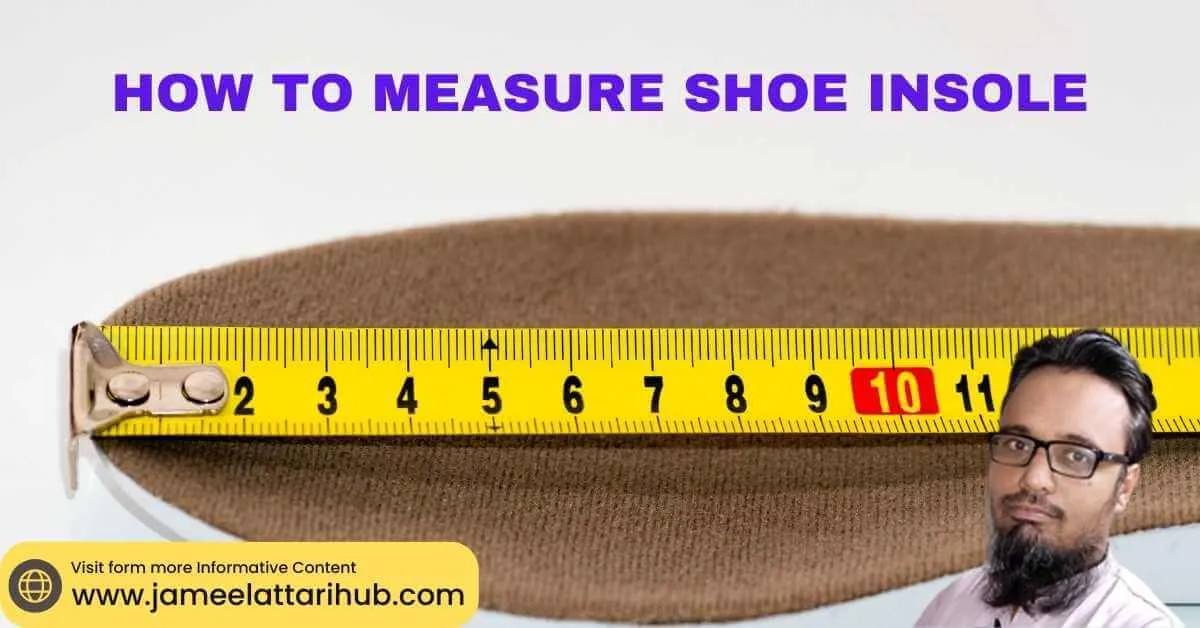How to Measure Shoe Insole – When it comes to footwear, one often overlooked yet crucial aspect is the insole. Properly measuring your shoe insole ensures not only a comfortable fit but also contributes to overall foot health. In this comprehensive guide, we will explore the intricacies of measuring shoe insoles, the tools required, and why it matter for your day-to-day comfort.
Understanding Foot Anatomy: The Foundation of Insole Measurement
Before delving into the art of measuring insoles, it’s essential to understand your foot’s anatomy. Feet comes in various shapes and sizes, and knowing your arch type (whether high, normal, or flat) is crucial. Pressure points, particularly in the heel, ball of the foot, and arch, further emphasize the need for tailored insoles.
Types of Shoe Insoles: Matching Support to Your Needs
Not all insoles are created equal. From cushioned insoles to support insoles, orthotic insoles, and custom-made options, each serves a specific purpose. Exploring these types allows you to make an informed decision based on your unique foot structure and comfort requirements.
Tools for Measurement: Ensuring Precision
Accurate measurements start with the right tools. The ubiquitous Brannock Device remains a stalwart in shoe stores, providing length, width, and arch length measurements. Additionally, printable foot sizing charts offer a DIY option but beware of common pitfalls to ensure accuracy.
Choosing the Right Size: Navigating Brand Discrepancies
Sizing discrepancies between brands can be a challenge, with international standards and brand-specific variations adding to the complexity. Trying before buying, whether in-store or considering online shopping, becomes imperative for a snug fit.
Insole Material Matters: Exploring Options for Enhanced Comfort
Different insole materials offer varied benefits. Memory foam provides adaptive comfort and longevity, while gel inserts excel in shock absorption and temperature regulation. Choosing the right material contributes significantly to your overall footwear experience.
Assessing Personal Comfort: The Key to Happy Feet
Comfort goes beyond just size. Ensuring proper arch support, avoiding overpronation or supination, and paying attention to width considerations are vital elements in creating a comfortable walking experience.
Gait Analysis: Walking the Talk of Insole Selection
Understanding your gait—whether you have a pronation, supination, or neutral gait—plays a pivotal role in insole selection. Tailoring your choice to address specific gait issues enhances overall support and comfort.
DIY Insole Measurement: Taking Matters into Your Own Hands
For those who prefer a hands-on approach, DIY insole measurement using foot tracings or everyday objects provides an alternative. A step-by-step guide ensures precision, helping you avoid common mistakes.
Special Considerations for Children: Growing Pains and Foot Development
Children’s feet are continually growing, and regular insole checks become crucial. Understanding the impact of growth spurts on foot development allows for timely updates to keep little feet happy.
Medical Advice and Podiatric Input: When to Seek Professional Guidance
When in doubt, consulting a podiatrist is a wise decision. This is especially true if you have pre-existing foot conditions or require prescription insoles for specific issues.
Insoles for Specific Activities: Tailoring Support to Your Lifestyle
Whether you’re a runner or work in a profession that demands prolonged standing, there are specialized insoles to address your unique needs. Shock absorption for running and arch support for standing professions are just a few examples.
Maintaining Insole Hygiene: A Step Towards Longevity
Proper care and maintenance contribute to the longevity of your insoles. Cleaning them regularly, using suitable products, and ensuring proper ventilation all play a role in keeping your footwear fresh and odor-free.
Monitoring Insole Wear and Tear: Knowing When It’s Time for a Change
Recognizing signs of wear and tear, such as compression and loss of arch support, is essential. Regular checks prevent discomfort and ensure your insoles continue to provide the necessary support.
DIY Insole Adjustments: Fine-Tuning for Personalized Comfort
Sometimes, a little adjustment is all you need. Adding extra support through gel inserts or cushioning pads allows you to tailor your insoles to your specific comfort requirements.
Incorporating Technology: The Rise of Smart Insoles
Technology has seeped into the world of insoles, with smart insoles offering foot-tracking capabilities. Understanding the benefits and choosing the right tech enhances your overall walking experience.
Insole Recycling and Eco-Friendly Options: Walking Green
Sustainability is becoming increasingly important, even in the world of insoles. Exploring eco-friendly options and participating in recycling programs aligns your comfort with environmental consciousness.
Consumer Reviews and Feedback: Navigating the Online Landscape
Before making a purchase, it’s wise to consider consumer reviews. Identifying reliable sources and understanding diverse opinions ensures you make an informed decision.
The Evolving Landscape of Insole Technology: What the Future Holds
As technology advances, so does insole technology. Exploring the innovation in materials and potential breakthroughs gives us a glimpse into the future of footwear comfort.
Conclusion
In conclusion, measuring your shoe insole is not just a task; it’s a journey toward unparalleled comfort and foot health. By understanding your foot anatomy, choosing the right size and material, and considering factors like gait and activity, you can stride confidently toward a comfortable and supportive walking experience. So, lace up, measure right, and step into a world of comfort like never before.
